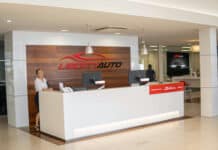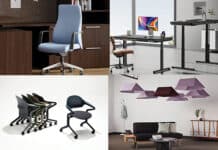Poppin, a provider of office furniture, supplies, and design services, recently hosted a panel in its New York City showroom that focused on the facility needs of technology, media, and internet companies. At the event, four panelists shared how they approach space planning and what they consider successful office design. These panelists included:
- Molly Jarr, an interior designer currently employed by HBO as a design resource coordinator
- Aditi Ramesh, the office manager and “Culture Guru” at TransferWise, where she is responsible for the NYC office, team, and environment
- Theresa Mershon, the creative director overseeing floorplanning for Hearst Magazines’ Digital Media spaces
- Tony Vargas, a people and places manager at Sprinklr, involved in setting up and revamping spaces

In particular, one aspect of the conversation focused on what or who some of the key drivers are behind changes in the workplace environment.
Hearst’s Mershon noted, “The push [for change] is coming directly from the working teams on the ground as well as from the C-suite. The working teams need comfortable collaboration spaces. The C-suite needs to make limited work space accommodate a rapidly growing organization.”
Meanwhile, Vargas from Sprinklr added that employers should help employees identify the needs they have to complete various tasks and then help them adjust that behavior. He said, “The push is coming from an industry-wide belief that employees can work from various places and through various channels. Therefore the spaces where they work have to resemble the freedom and comfort of that spirit.”

Referencing her work at the TransferWise facilities, Ramesh noted, “We intrinsically look at our desk arrangements during hiring plans, understanding where people sit, keeping in mind how limited space can positively impact and shape our company culture. It’s important that we facilitate collaboration between teams.”
David Branham, the director of merchandising at Poppin who served as the panel moderator believes the adoption of new forms of technology by employees is a key driver of change in the design of workplaces.
He said, “Mobile devices have shifted employees expectations of when, where, and how they work. Consequently, savvy business managers are looking for more appealing at-work experiences to help attract and retain talent, maximize productivity, and encourage wellness. While the most trend conscious workplace designs are emphasizing an anti-office experience, every business doesn’t need to be open plan, support mobile working, or install a coffee bar as a central gathering point. Regardless, the lack of employee- and technology-friendly features is now seen as a deterrent to organizational success.”


















![[VIDEO] Collect Asset Data at the Speed of Walking a Building](https://facilityexecutive.com/wp-content/uploads/2024/02/maxresdefault-324x160.jpg)